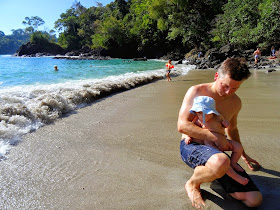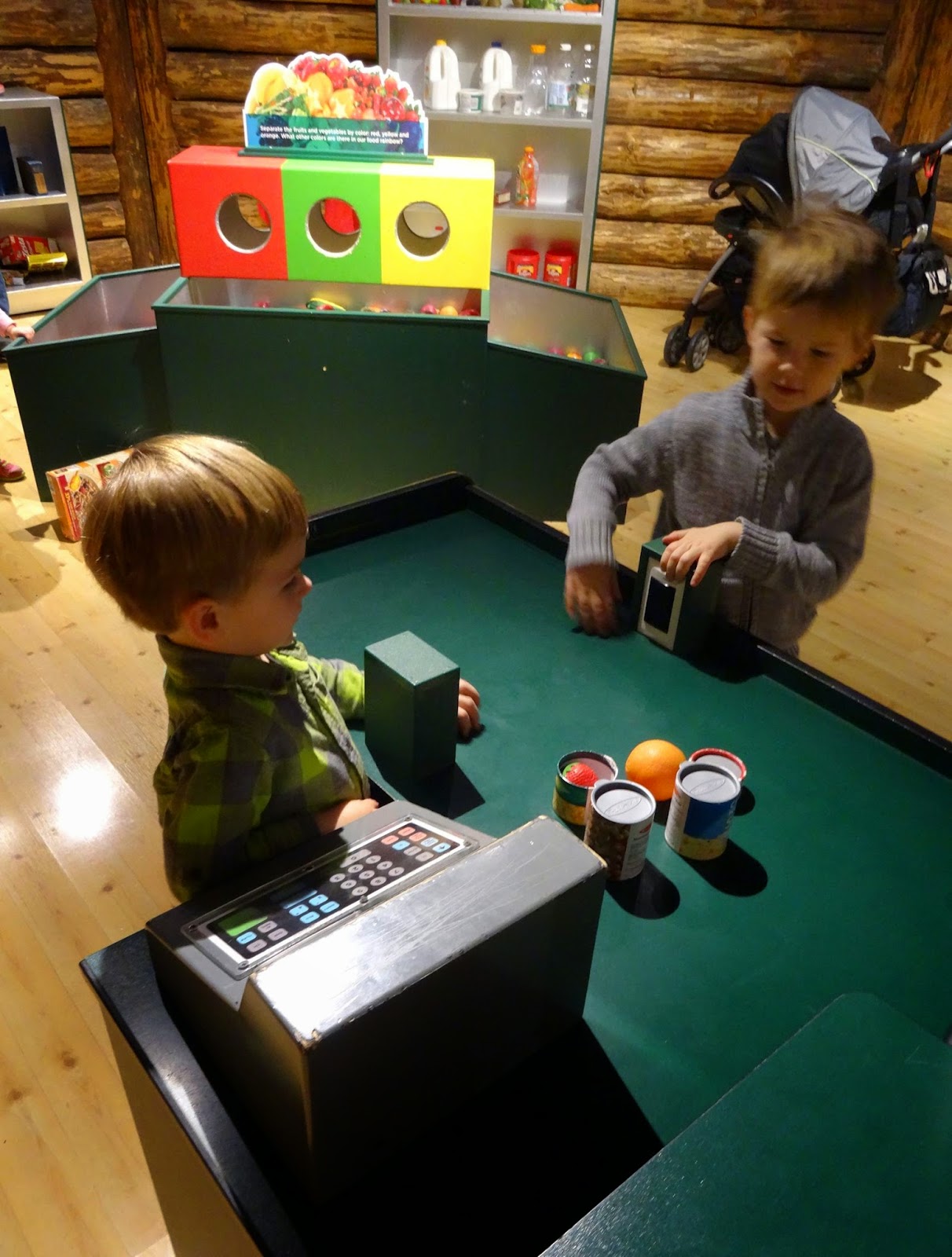In
Costa Rica, the eco-tourism capital of the world, almost any outdoor activity
or tour can be arranged. The area we were staying in offered a wide variety of
options including ATV jungle tours, bird watching trips, zip lining packages
similar to the one we had chosen in the cloud forest, canyoning tours (a hike
down a river with rappels down the waterfalls), dolphin & whale watching,
ocean & mangrove kayaking, paddle-boarding, surf school, white water
rafting, scuba diving, sport fishing, yoga, horseback riding… you name it, it
could be arranged. Our second full day in the Uvita area we opted for a
snorkeling and island tour, looking forward to spending some time out on the
water, getting off the beaten path and snorkeling a coral reef.
 |
| That spit in the distance is the Whale's Tail |
Our
tour started off in Parque Nacional Marino Ballena, a destination in itself.
Created to protect Costa Rica’s largest coral reef, the park stretches for 8
miles along the shore of Bahía Coronado and extends 9 miles out to sea. Named
after the humpback whales that gather in the waters during breeding season,
there is also a peninsula that resembles the tail of a whale and is accessible
during low tide. We picked up our life vests and hiked out to the waiting boat.
The
initial ride was longer than we had expected, almost a full hour. The seating
wasn’t very comfortable and only a few of us were protected from the sun, but
with sea turtle and dolphin sightings the time passed rather quickly. We
arrived at Reserva Biológica Isla del Caño and the guide hopped out to take
care of our paperwork with the Park officials. The 805-acre island was
considered sacred by the pre-Columbian Diquis peoples, and tombs and granite esferas (spheres) are scattered across the
area as a reminder of those times. When it was named a protected reserve in
1976 the only remaining inhabitants were relocated to the mainland. Popular for
day trips because of the shallow coral reefs, diving and snorkeling are allowed
in designated areas. Once our permits had been taken care of we circled closer
to the reefs and suited up.
I took
the first shift with Mikus and Vilis on the boat while Roberts took Lauris out
to try out his mask and snorkel. Garage sale finds, both older boys had been lugging
sets around in their backpacks the entire trip, and Lauris was absolutely thrilled
for a chance to try his out. It was a rough start, but once he figured it out
he was able to see fish and had a ton to tell me about when he returned to the
boat. As difficult as it was for Roberts to keep himself and Lauris afloat with
masks clear, we decided Mikus would get his turn in shallower waters and I
plunged in for my turn with the snorkel.
My
expectations for the snorkeling were pretty low; I expected to see a few fish,
rocks, maybe a reef. The reality was more amazing than I could have imagined!
At a few points I was enveloped by small schools, and very brightly colored
fish, ranging in size from tiny to the size of a salad plate, drifted around
the reef swaying with the waves. With no underwater camera to document the species
I saw, I only remember a few to recite: clownfish, various angelfish, and a
bright blue fish with small white spots. However, my time in the water was time
in another world; the New Year only a few days old and already I had flown like
a bird and swum with the fish!
Another
30 minutes by boat to reach the shore, to Violines Island, part of Humedal
Nacional Térraba-Sierpe (Térraba and Sierp River National Wetlands). Violines is only an island in that is it separated
from mainland by a river, but beyond our little tropical paradise and beach was
the largest mangrove swamp in the country, criss-crossed by a network of
channels and waterways that cover over 125 square miles. We dropped anchor on
the north side of the island, in a protected cove that allowed all three boys
plenty of time in the ocean.
Our
tour included lunch, and so we spent a couple of hours on the beach collecting
coconuts, soaking up (a little too much) sun and being eaten alive by some sort
of sand flea. We were sad that the tour was coming to an end, but the
combination of the sun and sounds on the last leg of the boat ride resulted in
a drowsy state of fatigue, and once back on the beach in Uvita we were content
to head back to the villas and prepare for another big day ahead.
















































